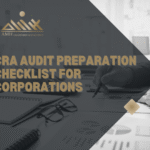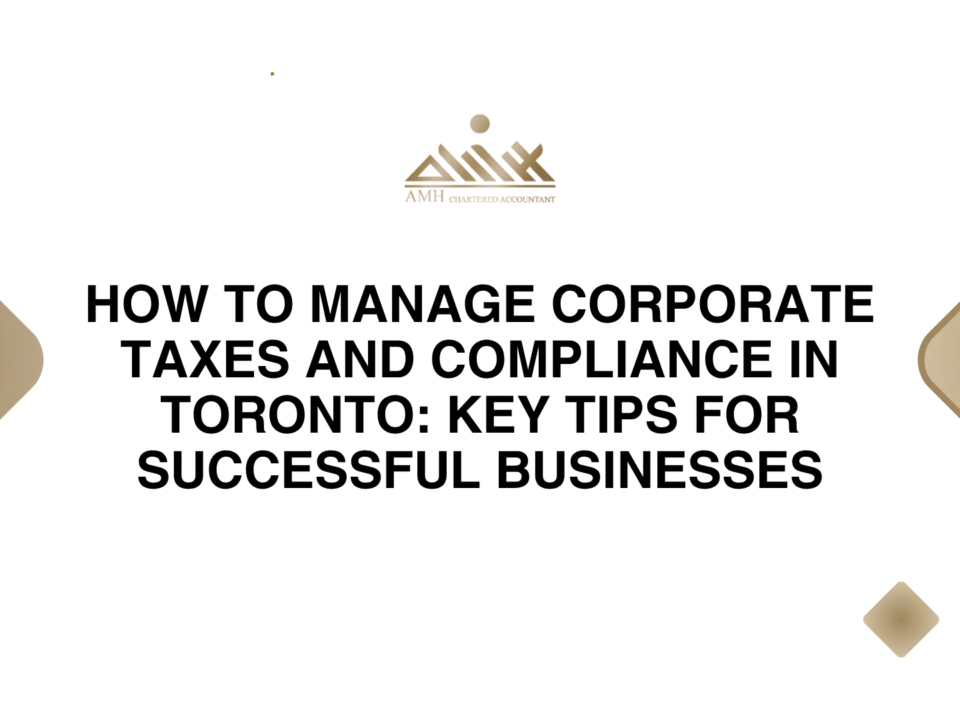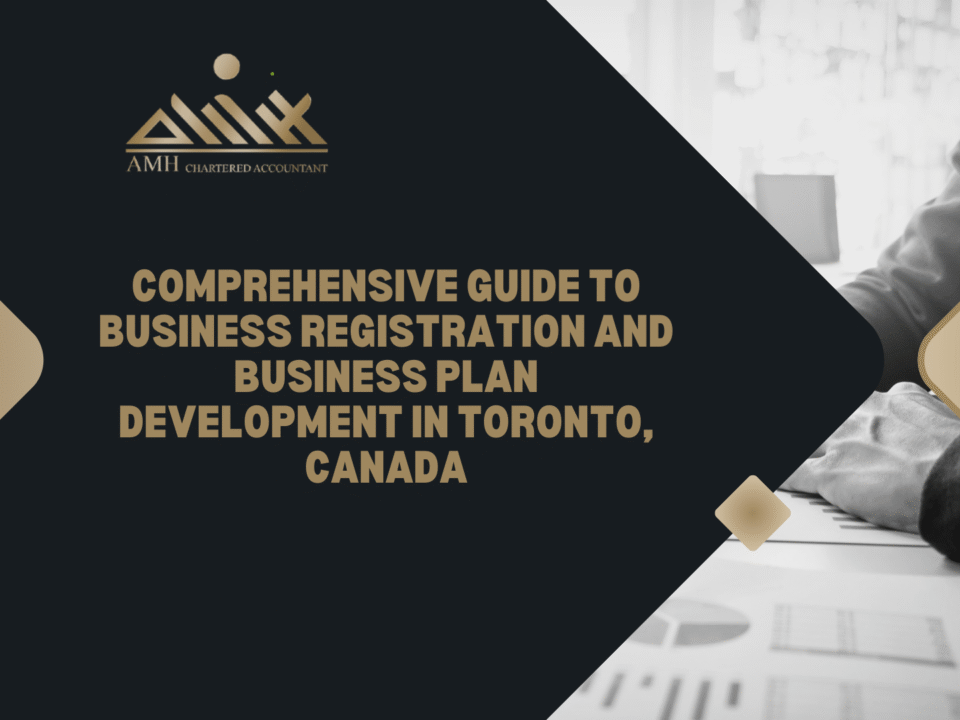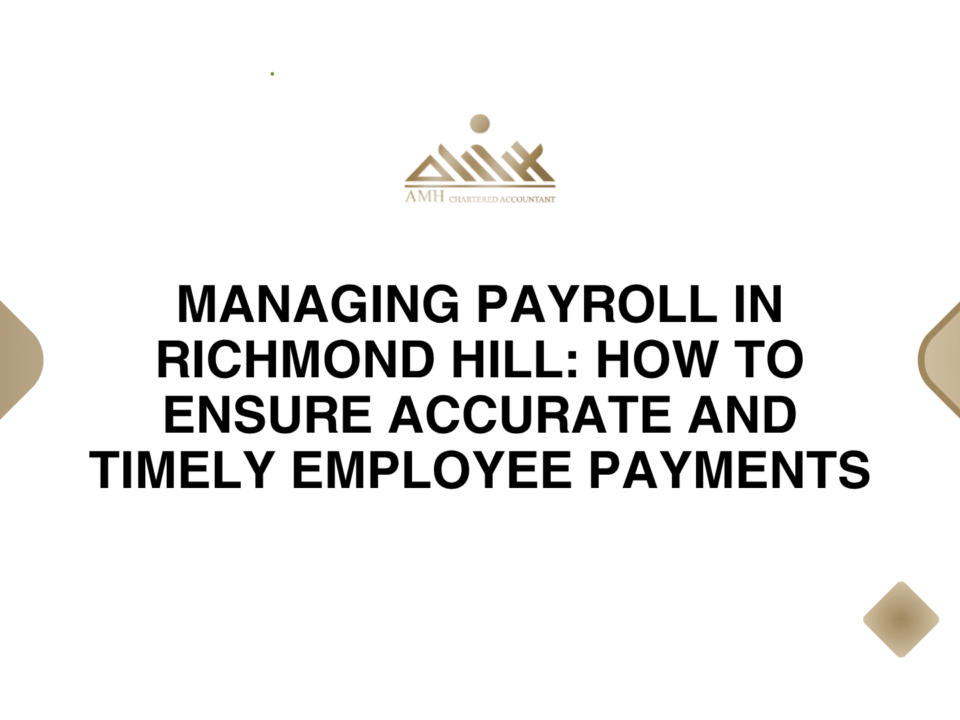
CRA Audit Preparation Checklist for Corporations
July 25, 2025
How to Present Startup Financials to Attract Investors
August 5, 2025Using Profit and Loss Statements to Optimize Your Operating Costs
A well-maintained profit and loss (P&L) statement is one of the most effective tools for managing and optimizing your operating costs. By analyzing this crucial document, businesses can identify inefficiencies, reduce unnecessary expenses, and improve profitability. At AMH Chartered Professional Accountant, we guide businesses in Toronto, Milton, Oakville, Hamilton, Kitchener, Waterloo, and the GTA through the process of using P&L statements to optimize operating costs.
Introduction: The Role of Profit and Loss Statements in Cost Optimization
Managing operating costs is crucial for the financial health of any business. Analyzing a profit and loss statement (P&L) is one of the best ways to gain insight into a company’s profitability and identify areas where costs can be optimized. The P&L statement provides an overview of a business’s revenue, expenses, and profits over a specific period, allowing business owners to make informed decisions about cost management.
In this article, we will explore how P&L statements can be used to optimize operating costs, increase profitability, and streamline business operations.
What is a Profit and Loss Statement?
A profit and loss (P&L) statement, also known as an income statement, is a financial document that shows a company’s revenues, costs, and expenses during a specific period (usually monthly, quarterly, or annually). The primary purpose of a P&L statement is to provide insights into the company’s profitability by subtracting its total expenses from its total revenues.
The P&L statement includes:
Revenue (Sales): The total income generated from business operations.
Cost of Goods Sold (COGS): The direct costs associated with producing the goods or services sold.
Operating Expenses: Indirect costs associated with running the business, such as rent, utilities, salaries, and marketing.
Net Profit or Loss: The final figure, which shows whether the business made a profit or incurred a loss.
How Profit and Loss Statements Reflect Operating Costs
Operating costs are the ongoing expenses required to run a business, such as wages, rent, utilities, raw materials, and marketing. These costs are typically divided into two categories:
Fixed Costs: These costs remain constant regardless of the level of production or sales, such as rent, salaries, and insurance.
Variable Costs: These costs fluctuate depending on production volume or sales, such as raw materials, commissions, and shipping.
A detailed P&L statement will list both fixed and variable operating costs, helping businesses track spending and identify inefficiencies or areas for improvement. By reviewing the P&L statement, companies can make informed decisions about where to cut back or invest more to maximize profitability.
Key Components of a Profit and Loss Statement
To optimize operating costs, it’s important to understand the key components of a P&L statement. Here’s a breakdown of the key sections:
Revenue: This section shows the total income generated by the business through the sale of goods or services. It is the starting point of the P&L statement.
Cost of Goods Sold (COGS): This represents the direct costs associated with the production of goods sold, such as materials and labor. It is subtracted from revenue to calculate the gross profit.
Gross Profit: This figure shows how much money the business has made after covering the direct costs of production. It is calculated by subtracting COGS from revenue.
Operating Expenses: This includes all indirect costs involved in running the business, such as rent, utilities, salaries, and marketing. These expenses are subtracted from the gross profit to determine operating income.
Operating Income: This shows the profitability of the business after covering both direct and indirect costs.
Net Income (or Net Loss): This is the final profit or loss, calculated by subtracting all expenses (including taxes and interest) from total revenue.
Understanding Your Operating Expenses
Operating expenses are the costs associated with running your business that are not directly tied to the production of goods or services. These include:
Fixed Costs: Rent, insurance, and salaried employees.
Variable Costs: Marketing expenses, commissions, and raw materials.
It’s crucial to regularly monitor these expenses to identify areas where you can reduce costs. For example, if marketing expenses have increased significantly, a review of the effectiveness of marketing strategies might be necessary.
How Profit and Loss Statements Help Identify Cost-Cutting Opportunities
A well-maintained P&L statement serves as a roadmap for cost optimization. Here’s how you can use the information to identify opportunities to reduce operating costs:
Step 1: Analyzing Revenue vs. Expenses
Start by comparing your revenue against your total expenses. If your expenses are growing faster than your revenue, it’s time to investigate further. Look at the breakdown of your expenses to identify where the increases are coming from and whether they are justifiable.
Step 2: Identifying Fixed vs. Variable Costs
Fixed costs don’t change with production volume, but variable costs do. It’s important to examine both types of costs:
Fixed Costs: While these costs are typically harder to reduce, there may be opportunities to negotiate leases, lower insurance premiums, or reduce salaries through restructuring or layoffs.
Variable Costs: These can be more easily controlled. Look at whether you can reduce raw material costs by negotiating with suppliers, optimizing production processes, or changing product specifications.
Step 3: Benchmarking Against Industry Standards
Compare your P&L statement with industry averages to see if your operating costs are in line with the norm. If your costs are significantly higher than industry standards, this may signal inefficiencies or areas that require attention.
Step 4: Identifying Trends in Operating Costs
Analyze trends in your operating expenses over time. If certain costs are rising steadily, take a closer look at what is driving those increases. Are there external factors at play, such as inflation, or are internal inefficiencies contributing to the rising costs?
Step 5: Implementing Cost-Cutting Measures Based on Insights
Once you have identified areas where costs are rising or where inefficiencies exist, you can begin implementing cost-cutting measures. This might include:
Renegotiating contracts with suppliers
Reducing energy consumption through efficiency measures
Outsourcing certain tasks to reduce payroll costs
Cutting back on discretionary spending like marketing or travel
The Importance of Regular Profit and Loss Reviews
It’s not enough to only review your P&L statement once a year during tax time. Regularly reviewing your P&L—ideally on a monthly or quarterly basis—allows you to spot potential issues early and take corrective action before problems grow. Regular P&L reviews also help you make more informed business decisions and stay aligned with your financial goals.
How AMH Chartered Professional Accountant Can Help Optimize Costs
At AMH Chartered Professional Accountant, we specialize in helping businesses optimize their operating costs through detailed financial analysis and strategic advice. Our services include:
Financial Analysis: We help you analyze your P&L statement and identify opportunities to reduce costs.
Cost Management Consulting: Our experts provide tailored advice to streamline your operations and cut unnecessary expenses.
Budgeting and Forecasting: We assist in creating realistic budgets and financial forecasts, helping you plan for the future while keeping costs in check.
By partnering with us, you’ll have the tools and insights needed to manage and optimize your operating costs, ensuring your business remains competitive and profitable.
Technology and Tools to Streamline Profit and Loss Analysis
Technology can make the process of analyzing P&L statements much easier and more accurate. Accounting software like QuickBooks, Xero, and Sage offer built-in tools to generate, track, and analyze your P&L statement in real time. These tools provide:
Automated Reports: Generate P&L statements automatically, ensuring you always have up-to-date financial data.
Cost Tracking: Monitor expenses in real time, making it easier to identify and control costs as they arise.
Data Visualization: Use graphs and charts to visually analyze your revenue and expenses, making it easier to spot trends and opportunities for improvement.
Best Practices for Using Profit and Loss Statements Effectively
To make the most of your P&L statements, follow these best practices:
Review Monthly: Regularly analyze your P&L statement to stay on top of your business’s financial health.
Maintain Accurate Records: Ensure that all income and expenses are recorded accurately, and that your accounting system is up to date.
Focus on Key Metrics: Pay close attention to gross profit, operating income, and net profit as indicators of cost efficiency.
Use Financial Insights: Use the insights gained from your P&L statement to make informed decisions about cost-cutting measures and strategic investments.
Future Trends in Profit and Loss Statement Analysis and Cost Optimization
As businesses increasingly adopt technology, the future of P&L statement analysis will likely involve more automation, real-time data analysis, and advanced forecasting tools. AI and machine learning are already beginning to play a role in identifying patterns and predicting financial outcomes, allowing businesses to optimize costs with greater precision.
Conclusion: Leveraging Profit and Loss Statements for Financial Success
A well-prepared and regularly reviewed profit and loss statement is essential for optimizing operating costs and improving profitability. By identifying trends, tracking expenses, and implementing cost-cutting strategies, businesses can maximize efficiency and financial health. With the help of AMH Chartered Professional Accountant, your business can take full advantage of P&L statements to streamline operations and achieve long-term financial success.
FAQs
What is the best way to reduce operating costs using a P&L statement?
The best way to reduce operating costs is to regularly review your P&L statement, identify trends in spending, and focus on reducing variable costs, renegotiating contracts, and eliminating inefficiencies.
Can AMH help with analyzing my P&L statement?
Yes, AMH Chartered Professional Accountant specializes in analyzing financial statements and providing insights into cost optimization and financial planning.
How often should I review my P&L statement?
It’s recommended to review your P&L statement on a monthly or quarterly basis to stay on top of trends and potential cost-cutting opportunities.
How can I identify unnecessary expenses in my P&L?
Look for areas where expenses are rising without a corresponding increase in revenue. Compare your costs to industry standards to identify potential inefficiencies.
Is it important to track both fixed and variable costs separately?
Yes, tracking both types of costs separately helps you identify which costs are flexible and can be adjusted versus which costs are set and harder to control.




